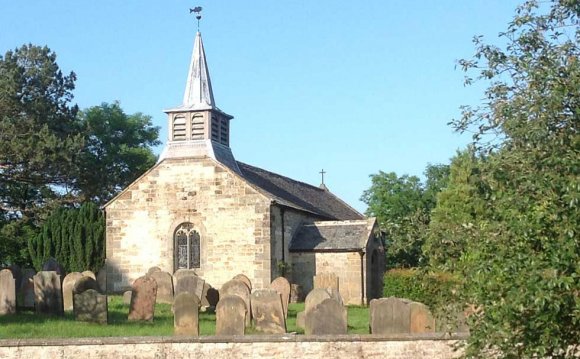
 The North Yorks Moors is one of two National Parks in North Yorkshire and is the largest expanse of heather upland in England. Designated a National Park in 1952 the North York Moors National Park is the smallest of Yorkshire's three National Parks, but is home to the largest expanse of unbroken wild heather moorland in England and a heritage coast upon which dinosaurs once roamed. Lush green fields, atmospheric woods, vast open moorland, dramatic coastline; the North York Moors has contrasting scenery and is the perfect place to get away from it all. Also, if you sit quietly enough you are sure to see a variety of birds and animals which inhabit the landscape. A sea of purple in late summer, the moors offer a solitude rarely found today.
The North Yorks Moors is one of two National Parks in North Yorkshire and is the largest expanse of heather upland in England. Designated a National Park in 1952 the North York Moors National Park is the smallest of Yorkshire's three National Parks, but is home to the largest expanse of unbroken wild heather moorland in England and a heritage coast upon which dinosaurs once roamed. Lush green fields, atmospheric woods, vast open moorland, dramatic coastline; the North York Moors has contrasting scenery and is the perfect place to get away from it all. Also, if you sit quietly enough you are sure to see a variety of birds and animals which inhabit the landscape. A sea of purple in late summer, the moors offer a solitude rarely found today.
Pilgrims found peace and settled on the Moors, hence you will find a wealth of important ruined abbeys, historic churches and priories across the area. To help the pilgrims to find their way, the landscape is dotted with crosses, perhaps the most recognisable feature of the Moors today. Traditions and heritage are important to the people who live on the Moors; arts and crafts, folk music and local recipes can all be found in the villages that scatter this landscape. But in this National Park you will also find an eye to the future, with the land being managed in a responsible way and the local businesses trying to reduce their environmental impacts on this unique landscape.
The best way to experience this unspoilt landscape is on two feet or two wheels. There are lots of short family walks and cycle rides available as well as long distance trails, such as the Cleveland Way National Trail, and challenging mountain bike routes. The North York Moors National Park is also a haven for wildlife with lapwing, curlew, golden plover and merlin all breeding in the National Park. It is the most northerly place that you are likely to find the Duke of Burgundy butterfly and the most southerly for the dwarf cornel plant.
 About one fifth of the National Park is forestry and, with a forest drive, waymarked walks and cycle routes and easy access trails, Dalby Forest is one of the main recreational areas of Ryedale. Two of Ryedale’s abbeys lie within the National Park boundary, both of which are English Heritage sites. The largest of these is Rievaulx Abbey and these ruins are known to be the most splendid in Yorkshire. The ruins of Byland Abbey are smaller, but the site has the largest collection of medieval floor tiles in their original location. The National Trust site of Rievaulx Terrace and Temples is also in the National Park. This half-mile grass covered terrace gives wonderful views over Rievaulx Abbey and the Rye valley.
About one fifth of the National Park is forestry and, with a forest drive, waymarked walks and cycle routes and easy access trails, Dalby Forest is one of the main recreational areas of Ryedale. Two of Ryedale’s abbeys lie within the National Park boundary, both of which are English Heritage sites. The largest of these is Rievaulx Abbey and these ruins are known to be the most splendid in Yorkshire. The ruins of Byland Abbey are smaller, but the site has the largest collection of medieval floor tiles in their original location. The National Trust site of Rievaulx Terrace and Temples is also in the National Park. This half-mile grass covered terrace gives wonderful views over Rievaulx Abbey and the Rye valley.
Learn more about the National Park by visiting one of the two National Park Visitor Centres. Discover exhibitons, local arts and craft displays, indoor and outdoor play areas and beautiful grounds at the Moors National Park Centre in Danby or visit the Sutton Bank National Park Centre near Thirsk with its interactive exhibition, fabulous views and wildlife watch area.
YOU MIGHT ALSO LIKE












